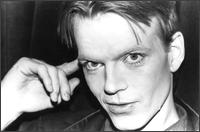a sort of currency, which heaven,
against all odds, accepts.
So Will, which is to say, May what
I purpose, please, this once, and what
will happen coincide.
And who hasn‘t felt the urgency or desperation to ask that question? "The Selvage
Certain of these confections are driven by an easy, if flavorful, flow of straight passages presented as verse and resulting in the slightest alterations to meanings.
Sure, it has been done, but this is a nice combination of elements. Add to the convenience of an unobtrusive read the poet’s sweet descriptive gift, wide-ranging curiosity evidenced in subject choice, and the aptly placed piece of richer wordsmithery and you have an evocative, at times emotional experience in your hands.
It's a kind of prose with dollops of poetry where most needed.
Gregerson's poems puzzle, but not too much. And even where you never really wrap your mind around the whole garden, certain of the flowers growing within are no less satisfying.
highwayscribery admits to having only a vague notion of what is going on the poem "Varenna," but still has room in the heart for:
Quaker-gray from taupe, until
the blackwater satins unroll their
gorgeous lengths above a sharpening
partition of lake-and-loam.
There's a music that is pleasing and it can be found throughout the work presented here. That said, Gregerson's interest in an antiquity has her wander where only those academic poets and their academic followers dare to.
You won't need to know who Theseus was to understand "Theseus Forgetting," its lesson universal like so much scripted here.
But "Ariadne in Triumph" and "Dido Refuses to Speak" are less decipherable than some of the other poems and a guide in the back of the tome to the classic personalities employed here may suggest the author and her editors realized that some of this stuff is beyond the ken of the common cur. (guilty)
"The Selvage," is free of cliché. Its locations are not worn literary beacons like Paris, London and Prague, but off-the-grid and unknown places that add to our knowing.
The chosen topics are both ancient and contemporary.
There is an (positive) expression of Obama’s election and a poetic critique of the little girl in a red dress in Stephen Spielberg’s black-and-white “Schindler’s List. There is an appreciation for a dead dray horse a, recuperation of poet Isabella Whitney and more.
Fragments of the wide world shining throughout “The Selvage,” represent a lovely return on a minimal investment.



